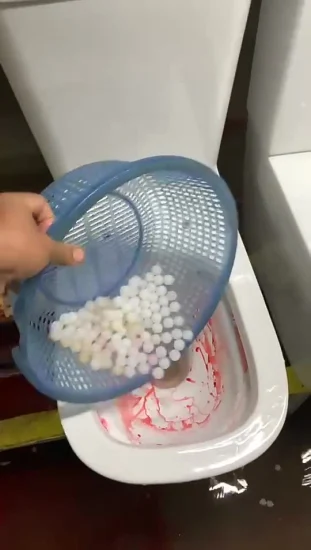Can One to Flush Food in the Toilet?
Can One to Flush Food in the Toilet?
Blog Article
What are your ideas with regards to Flushing Food Down the Toilet??

Introduction
Many individuals are typically confronted with the dilemma of what to do with food waste, especially when it concerns leftovers or scraps. One typical question that occurs is whether it's alright to purge food down the commode. In this post, we'll delve into the reasons why individuals might consider flushing food, the consequences of doing so, and different approaches for appropriate disposal.
Reasons individuals might think about purging food
Absence of awareness
Some people might not be aware of the prospective injury triggered by purging food down the bathroom. They might mistakenly believe that it's a harmless practice.
Convenience
Purging food down the commode might seem like a fast and simple service to dealing with unwanted scraps, specifically when there's no close-by trash bin available.
Laziness
Sometimes, individuals may simply choose to flush food out of large idleness, without considering the consequences of their actions.
Repercussions of flushing food down the commode
Ecological effect
Food waste that ends up in waterways can add to pollution and harm water ecosystems. Furthermore, the water used to flush food can stress water resources.
Plumbing problems
Flushing food can bring about clogged pipes and drains pipes, triggering pricey plumbing fixings and troubles.
Sorts of food that must not be purged
Fibrous foods
Foods with fibrous textures such as celery or corn husks can obtain entangled in pipes and create obstructions.
Starchy foods
Starchy foods like pasta and rice can absorb water and swell, leading to clogs in pipes.
Oils and fats
Greasy foods like bacon or food preparation oils need to never ever be purged down the bathroom as they can solidify and create clogs.
Proper disposal approaches for food waste
Utilizing a waste disposal unit
For homes outfitted with waste disposal unit, food scraps can be ground up and flushed through the pipes system. Nevertheless, not all foods appropriate for disposal in this fashion.
Recycling
Particular food packaging materials can be recycled, reducing waste and minimizing environmental impact.
Composting
Composting is an environment-friendly way to throw away food waste. Organic products can be composted and made use of to enrich soil for gardening.
The importance of proper waste management
Reducing environmental harm
Correct waste monitoring techniques, such as composting and recycling, assistance reduce contamination and preserve natural deposits for future generations.
Safeguarding plumbing systems
By avoiding the practice of flushing food down the bathroom, home owners can protect against expensive pipes fixings and maintain the stability of their plumbing systems.
Final thought
Finally, while it may be tempting to purge food down the commode for convenience, it is essential to comprehend the potential repercussions of this activity. By taking on appropriate waste monitoring techniques and throwing away food waste responsibly, people can add to healthier pipes systems and a cleaner atmosphere for all.
FLUSH FOOD DOWN THE TOILET?
FLUSHING FOOD CAN CAUSE BLOCKED DRAINS IN YOUR HOME
All of the plumbing fixtures in your home are connected to the same sewer pipe outside of your home. This outdoor sewer pipe is responsible for transporting all the wastewater from your home to the Council sewer mains. Even small pieces of food that go down the kitchen sink can cause problems for your sewer. It should therefore be obvious that flushing larger bits of food, such as meat, risks a clog in either the toilet itself or the sewer pipes. Flushing greasy food is even more problematic because oil coagulates when it cools, coating the interior lining of your pipes.
THE TOILET IS NOT A BIN
Food isn’t the only thing that people shouldn’t be flushing down the toilet. People use the toilet to dispose of all kinds of things such as tampons, makeup wipes, dental floss, kitty litter and even underwear. Water goes to great lengths to educate residents about the high costs and stress placed on wastewater treatment systems simply from people flushing the wrong stuff down the toilet. It costs taxpayers millions of dollars each year, and homeowners thousands in blocked drain repairs.
FLUSHING FOOD IS A WASTE OF WATER
Flushing food is a waste of our most precious resource - water. In June this year Level 1 water restrictions were introduced to protect water supply from drought conditions. Much of New South Wales continues to be affected by prolonged drought with recent figures revealing up to 97 per cent of the state remains in drought. Depending on whether you have a single or dual flush toilet, every single flush uses between five and 11 litres of water. In the current climate this is a huge amount of water to be wasting on flushing food that should be placed in the bin (or better yet, the compost).
https://www.jabplumbingsolutions.com.au/blog/can-you-flush-food-down-the-toilet

Hopefully you liked our topic about Flushing Food Down the Toilet?. Thanks for spending some time to browse our piece of content. Enjoyed our blog entry? Please share it. Let another person discover it. I thank you for reading our article about Is it safe to flush food (especially rice) down the toilet?.
Click On This Link Report this page